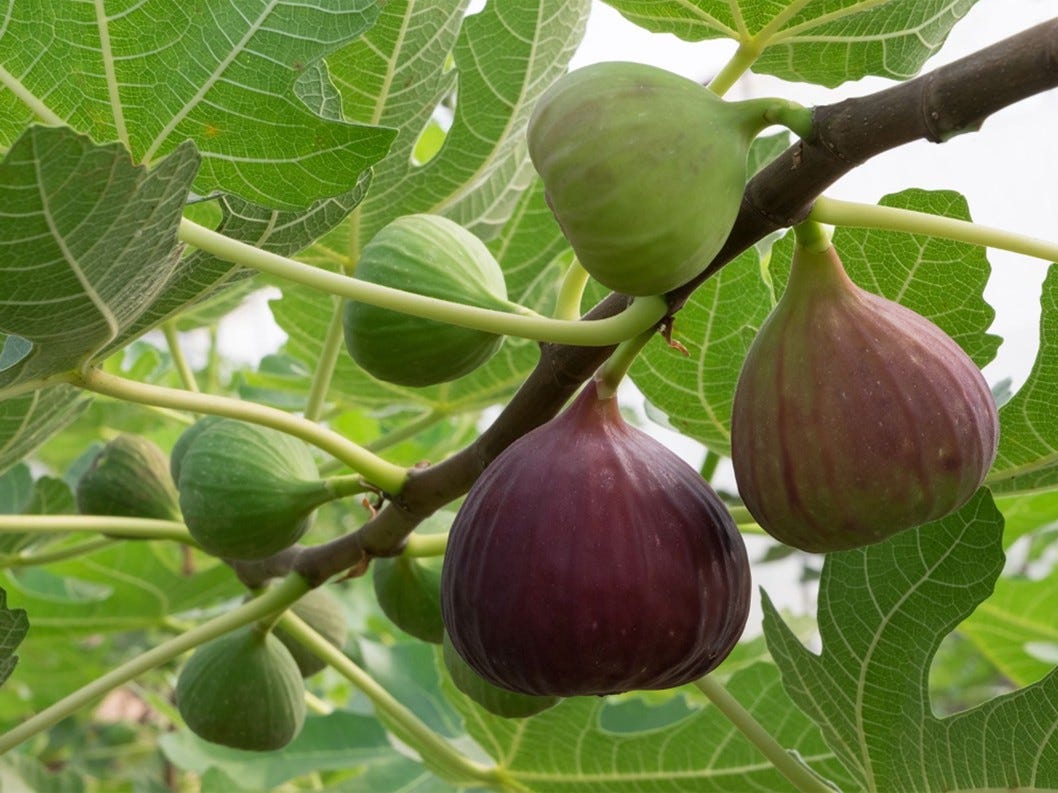My experience with figs is suspect. Understanding that the fruit known as the fig is easily available, my primary encounters date back to the cookie-like snacks, Fig Newtons. It is true: the filling inside those tasty treats contains ingredients other than the figs themselves. Still, I must confess, anytime I hear mention of “figs,” my mind seems to inevitably conjures up images of those sweet Fig Newtons.
[a Fig Newtons box from 1983]
How different are figs in the Bible! Rather than having anything to do with Nabisco, the fig tree is celebrated as a symbol of prosperity, fertility, and health. Figs symbolize peace. They symbolize shalom.
There are numerous scriptures involving them, but here is just a taste. (Sorry, I couldn’t resist bringing in that particular sensory function!)
In 1 Kings 4:25, we read “During Solomon’s lifetime Judah and Israel lived in safety, from Dan even to Beer-sheba, all of them under their vines and fig trees.” Vines represent, among other things, the relationship between God and Israel. In this text, the fig tree signifies the reign of Solomon as a time of protection.
The prophet Micah presents a vision of the future in which “nation shall not lift up sword against nation; neither shall they learn war any more; but they shall all sit under their own vines and under their own fig trees, and no one shall make them afraid, for the mouth of the Lord of hosts has spoken” (4:3-4). An era free from battle and combat will be celebrated as the passing away of fear and retribution.
The glorious image of the fig tree appears in the New Testament, in John 1. We hear, “When Jesus saw Nathanael coming toward him, he said of him, ‘Here is truly an Israelite in whom there is no deceit!’ Nathanael asked him, ‘Where did you get to know me?’ Jesus answered, ‘I saw you under the fig tree before Philip called you’” (vv. 47-48). The word translated “deceit” δόλος (dolos) also means “guile.”
Nathanael is an Israelite without deceit, without guile. According to Jesus, he is the perfect picture of God’s covenant people. And Jesus spots him sitting under a fig tree. Even more than the prophet’s vision of a future realm of peace, the messianic age has arrived—even if only in part.
Wow! As a youngster, apparently every time I consumed a Fig Newton, I was unwittingly crying out an enthusiastic “come, Lord Jesus”! Again, unwittingly.
Matthew and Mark tell a story with a slightly different take on a fig tree. This is after Jesus has made his triumphal entry into Jerusalem. (We now celebrate that as Palm Sunday.) As they were traveling, Jesus became hungry. As Mark recounts, “Seeing in the distance a fig tree in leaf, he went to see whether perhaps he would find anything on it. When he came to it, he found nothing but leaves, for it was not the season for figs.”
Okay, it’s an honest mistake. We can’t blame the tree.
But not so fast. Jesus addresses the fig tree, “‘May no one ever eat fruit from you again.’ And his disciples heard it” (11:13-14). Didn’t we just establish that it wasn’t the season for figs? Is Jesus being impertinent… impudent… insolent?
Matthew tells us the tree withered on the spot. In Mark’s version, the group is heading out the next morning, and Peter sees the now-shriveled plant. He exclaims, “Rabbi, look! The fig tree that you cursed has withered” (v. 21). Jesus responds with comments showing the power of faith and prayer.
One might wonder if the poor tree had to die for Jesus to make his point.
Perhaps there’s more to it than one single lesson. In both narratives, the tree is seen in full leaf. That would typically signal the presence of fruit. In terms of leafiness, this particular fig tree has jumped the gun. It’s showing the promise of fruit, but it’s not delivering.
It would be like adorning one’s house on Halloween. The decorative spider webs, the skeletons, and the jack-o’-lantern are all in position. However, when the trick or treaters show up, there are no treats. One might say it’s a case of false advertising.
However, don’t be surprised if upon waking in the morning, it’s discovered that one’s house has been treated to the first part of the request!
It might seem the fig tree has met with a similar fate.
How often do we appear ready to produce the fruit—but display none? We are all dressed up with the greenery—but the product is lacking.
I need to check out the man in the mirror. How many times have I lamented being clothed and ready to go but didn’t do squat? I’ve let the fruit die on the vine. Fortunately, grace has been shown to me. New fruit has appeared, and I’ve been able to share it. Thanks be to God!
Whether from a tree or a treat, the fig continues to teach. It reminds us of the call to bear good fruit and not to just look the part. That is, to avoid the trick and give the treat!
So the next time any of us bite into a Fig Newton, we would do well to pray: “Lord, let me not merely show leaves—but let me bear fruit.”




